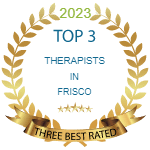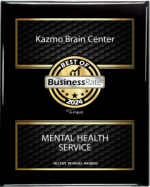Psychotic disorders are a group of serious illnesses that affect the mind. They make it hard for someone to think clearly, make good judgments, respond emotionally, communicate effectively, understand reality, and behave appropriately.
When symptoms are severe, people with psychotic disorders have trouble staying in touch with reality and often are unable to handle daily life. But even severe psychotic disorders usually can be treated.
Types
There are different types of psychotic disorders, including:
Schizophrenia: People with this illness have changes in behavior and other symptoms — such as delusions and hallucinations — that last longer than 6 months. It usually affects them at work or school, as well as their relationships. Know the early warning signs of schizophrenia.
Schizoaffective disorder: People have symptoms of both schizophrenia and a mood disorder, such as depression or bipolar disorder.
Schizophreniform disorder: This includes symptoms of schizophrenia, but the symptoms last for a shorter time: between 1 and 6 months.
Brief psychotic disorder: People with this illness have a sudden, short period of psychotic behavior, often in response to a very stressful event, such as a death in the family. Recovery is often quick — usually less than a month. .
Delusion disorder : The key symptom is having a delusion (a false, fixed belief) involving a real-life situation that could be true but isn’t, such as being followed, being plotted against, or having a disease. The delusion lasts for at least 1 month. Read more on the types of delusions.
Shared psychotic disorder (also called folie à deux): This illness happens when one person in a relationship has a delusion and the other person in the relationship adopts it, too. Learn more about the shared psychotic disorder and how it develops.
Substance-induced psychotic disorder: This condition is caused by the use of or withdrawal from drugs, such as hallucinogens and cracks cocaine, which causes hallucinations, delusions, or confused speech.
Psychotic disorder due to another medical condition: Hallucinations, delusions, or other symptoms may happen because of another illness that affects brain function, such as a head injury or brain tumor.
Paraphrenia: This condition has symptoms similar to schizophrenia. It starts late in life when people are elderly.
Symptoms
The main ones are hallucinations, delusions, and disordered forms of thinking.
Hallucinations mean seeing, hearing, or feeling things that don’t exist. For instance, someone might see things that aren’t there, hear voices, smell odors, have a “funny” taste in their mouth, or feel sensations on their skin even though nothing is touching their body.
Delusions are false beliefs that don’t go away even after they are false. For example, a person who is certain their food is poisoned, even if someone has shown them that the food is fine, has a delusion.
Other possible symptoms of psychotic illnesses include:
- Disorganized or incoherent speech
- Confused thinking
- Strange, possibly dangerous behavior
- Slowed or unusual movements
- Loss of interest in personal hygiene
- Loss of interest in activities
- Problems at school or work and with relationships
- The cold, detached manner with the inability to express emotion
- Mood swings or other mood symptoms, such as depression or mania
People don’t always have the same symptoms, and they can change over time in the same person.
Causes
Doctors don’t know the exact cause of psychotic disorders. Researchers believe that many things play a role. Some psychotic disorders tend to run in families, which means that the disorder may be partly inherited. Other things may also influence their development, including stress, drug abuse, and major life changes.
People with certain psychotic disorders, such as schizophrenia, may also have problems in parts of the brain that control thinking, perception, and motivation.
In schizophrenia, experts believe that nerve cell receptors that work with a brain chemical called glutamate may not work properly in specific brain regions. That glitch may contribute to problems with thinking and perception.
These conditions usually first appear when a person is in their late teens, 20s, or 30s. They tend to affect men and women about equally.
Diagnosis
To diagnose a psychotic disorder, doctors will take a medical and psychiatric history and possibly perform a brief physical exam. The person may get blood tests and sometimes brain imaging (such as MRI scans) to rule out physical illness or drug use like cocaine or LSD.
If the doctor finds no physical reason for the symptoms, they may refer the person to a psychiatrist or psychologist. These mental health professionals will use specially designed interview and assessment tools to decide whether the person has a psychotic disorder.
Treatment
Most psychotic disorders are treated with a combination of medications and psychotherapy, which is a type of counseling.
Medication: The main type of drug that doctors prescribe to treat psychotic disorders is “antipsychotics.” Although these medicines aren’t a cure, they are effective in managing the most troubling symptoms of psychotic disorders, such as delusions, hallucinations, and thinking problems.
Older antipsychotics include:
- Chlorpromazine (Thorazine)
- Fluphenazine (Prolixin)
- Haloperidol (Haldol)
- Loxapine (Loxitane)
- Perphenazine (Trilafon)
- Thioridazine (Mellaril)
Newer “atypical antipsychotics” include:
- Aripiprazole (Abilify)
- Asenapine (Saphris)
- Brexpiprazole (Rexulti)
- Cariprazine (Vraylar)
- Clozapine (Clozaril)
- Iloperidone (Fanapt)
- Lurasidone (Latuda)
- Olanzapine (Zyprexa)
- Olanzapine/semi orphan (Lybalvi)
- Paliperidone (Invega)
- Paliperidone palmitate (Invega Sustenna, Invega Trinza)
- Quetiapine (Seroquel)
- Risperidone (Risperdal)
- Ziprasidone (Geodon)
Doctors usually first prescribe the newer ones because they have fewer and more tolerable side effects than older antipsychotics. Some of the medications are available by injection and only need to be taken once or twice a month or even every three months. This can be easier to manage than remembering to take a daily pill.
Psychotherapy: There are different types of counseling including individual, group, and family therapy, that can help someone who has a psychotic disorder.
Most people with psychotic disorders are treated as outpatients, meaning they don’t live in institutions. But sometimes people need to be hospitalized, such as if they have severe symptoms, are in danger of hurting themselves or others, or can’t care for themselves because of their illness.
Recovery
Each person being treated for a psychotic disorder may respond to therapy differently. Some will show improvement quickly. For others, it may take weeks or months to get symptom relief.
Some people may need to continue treatment for an extended period of time. Some, such as those who have had several severe episodes, may need to take medication indefinitely. In these cases, the medication usually is given in as low a dose as possible to minimize side effects.
What is the Outlook for People With Psychotic Disorders?
The depends on the type of psychotic disorder and the person who has it. But these disorders are treatable, and most people will have a good recovery with treatment and close follow-up care.
Can Psychotic Disorders be Prevented?
No. But the sooner treatment starts, the better. It helps to prevent symptoms. Seeking help as soon as possible can help the person’s life, family, and relationships.
For people who are at high risk for psychotic disorders, such as those who have a family history of schizophrenia, avoiding drugs such as marijuana and alcohol may help to prevent or delay these conditions.
Resources:www.webmd.com







